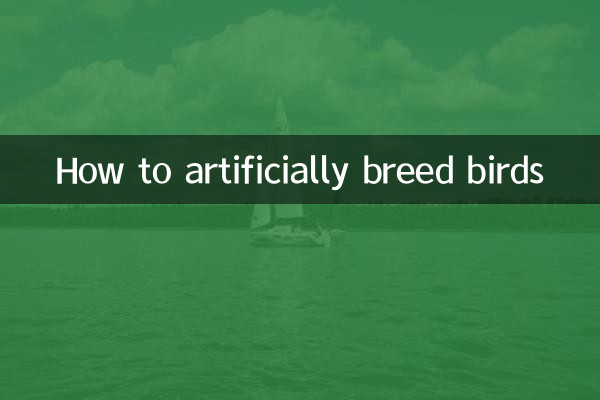How to artificially breed birds
Artificial breeding of birds is a highly technical job that requires mastering scientific feeding and management methods and breeding techniques. In recent years, with the continuous expansion of the pet bird market, artificial bird breeding technology has also received more and more attention. The following is a detailed guide on artificial breeding of birds, combining hot topics and hot content in the past 10 days.
1. Basic conditions for artificial breeding of birds

Artificial breeding of birds needs to meet the following basic conditions:
| Conditions | Description |
|---|---|
| suitable environment | Keep the temperature between 20-30℃ and the humidity between 50%-70% |
| Nutritionally balanced feed | Provide protein, vitamin and mineral rich foods |
| healthy breeding birds | Choose healthy, disease-free adult birds as breeding birds |
| quiet environment | Avoid noise and frequent interruptions to ensure birds feel safe |
2. Steps of artificial breeding of birds
Artificial breeding of birds mainly includes the following steps:
| steps | Operational points |
|---|---|
| pairing | Choose healthy male and female birds to pair up and observe whether they are harmonious |
| nest building | Provide suitable nest boxes or nest materials to help birds build their nests |
| lay eggs | After the female bird lays eggs, she needs to keep the environment stable and avoid disturbing her. |
| hatch | Natural incubation or artificial incubation, controlled temperature and humidity |
| Brooding | Provide appropriate feed and pay attention to the warmth and hygiene of the young birds |
3. Characteristics of artificial breeding of different birds
Different types of birds have different characteristics and requirements for artificial breeding:
| bird species | Reproductive characteristics |
|---|---|
| parrot | A larger nest box is required, and the incubation period is about 18-30 days. |
| Fumintiao | Easy to breed, the incubation period is about 14 days, and the young birds grow quickly |
| pigeon | Strong pairing ability, incubation period is about 17-19 days |
| Thrush | Sensitive to the environment and needs to provide a secluded nest |
4. Precautions for artificial breeding of birds
When carrying out artificial breeding of birds, the following matters need to be paid attention to:
| Things to note | Description |
|---|---|
| avoid inbreeding | Inbreeding can easily lead to offspring with weak constitution and poor disease resistance |
| Control breeding frequency | Overbreeding affects the health of breeding birds |
| Prevent and treat diseases | Disinfect regularly and pay attention to the health of the birds |
| Record breeding data | Record spawning, hatching, brooding and other data for easy analysis |
5. Common problems and solutions in artificial breeding of birds
During the artificial breeding of birds, you may encounter the following common problems:
| question | Solution |
|---|---|
| Does not lay eggs | Check whether nutrition, lighting and environment are suitable |
| Abandon the nest | Reduce disturbance and provide a quiet breeding environment |
| Hatching failed | Check temperature and humidity to ensure egg quality |
| baby bird death | Strengthen brooding management and provide appropriate feed |
6. Conclusion
Artificial breeding of birds is a job that requires patience and care. Only by mastering scientific methods and techniques can the success rate of breeding be improved. Through reasonable environmental control, nutritional management and disease prevention, the reproduction of birds can be effectively promoted and bring more fun to bird lovers. I hope the content of this article can help you better understand the key points and methods of artificial breeding of birds.

check the details

check the details